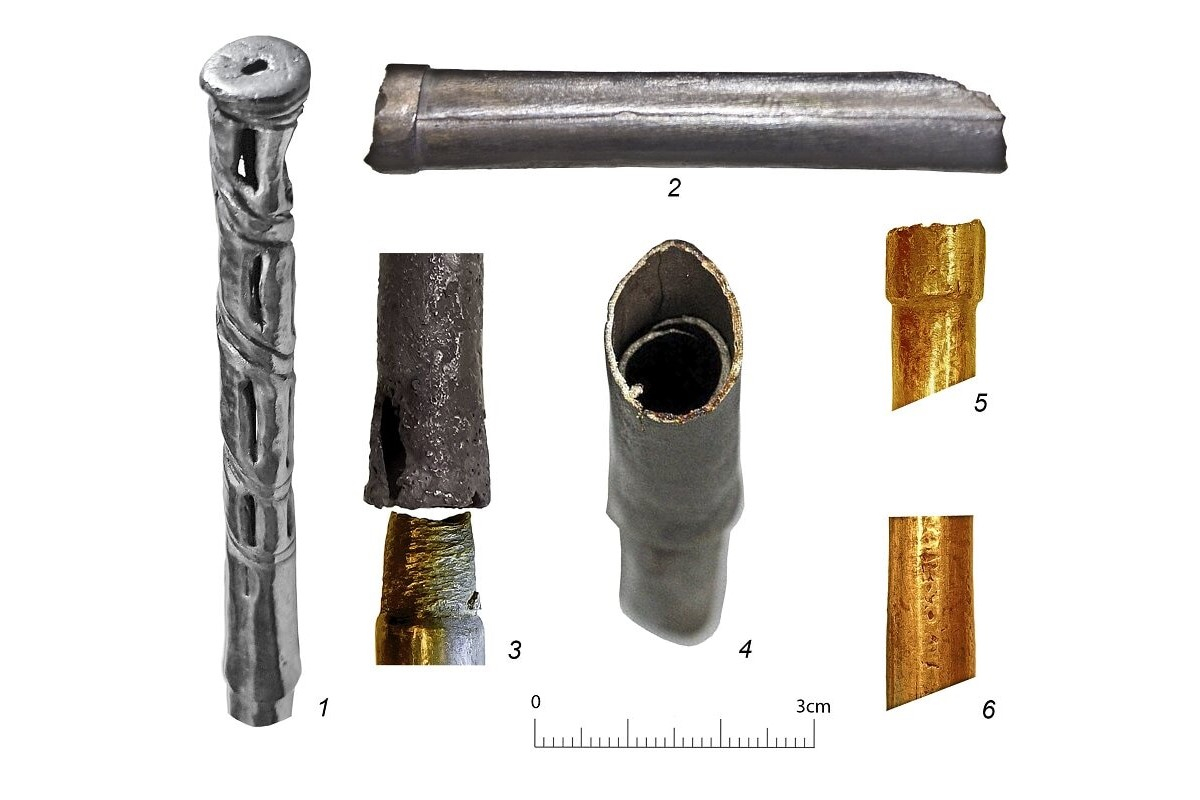In the Caucasus, people partied like Sumerians: the ‘sceptres’ from the Maikop kurgan could be the world’s oldest surviving drinking straws

A group of scientists, including Dr Larisa Savelieva, Associate Professor in the Department of Geomorphology at St Petersburg University, has re-examined a set of eight silver and gold tubes from the collection of the State Hermitage Museum. These artefacts were previously thought to be sceptres or poles to support a canopy during funerals. Re-examination of these objects, however, suggested that they had been used as tubes for the communal drinking of beer. A strainer in the tip of each tube would filter out the impurities that were common in ancient beer.
The hypothesis that these gold and silver tubes were used for drinking beer from a shared vessel belongs to the archaeologist Viktor Trifonov from the Institute of the History of Material Culture of the Russian Academy of Sciences.
In 2020, under the supervision of Larisa Savelieva and with the participation of Denis Petrov, a master’s student at St Petersburg University, microfossils (i.e. fossils ranging in size from 0.001 mm to 1 mm) were recovered from the inner surface of one of the strainers. Then micro-palaeobotanical analysis was carried out.
The challenge lay in extracting all plant residues from a tiny sample – less than one gram of the sample material.
Larisa Savelieva, Associate Professor in the Department of Geomorphology, St Petersburg University
‘The residue analysis revealed the presence of a pollen grain from a lime tree, cereal phytoliths and, most importantly, barley starch granules. The presence of barley starch and cereal phytoliths in the residue confirmed Viktor Trifonov’s hypothesis,’ explained Larisa Savelieva.
The Maikop kurgan is located on the outskirts of Maikop, a small town in the north-western Caucasus. It is the richest burial mound of the Early Bronze Age – not only in the Caucasus, but across the Old World. The burial mound was discovered in summer 1897, during excavations led by Professor Nikolay Veselovsky of St Petersburg University. It contained a large chamber divided into three differently sized compartments. In one of the compartments, a set of eight long, thin silver and gold tubes with elaborate tips and decorative bull figurines was found. In due course, the Maikop kurgan, famed for its extremely rich burial and evidence for extensive cultural connections, would lend its name to the Maikop Early Bronze Age Culture (c. 3700–3000/2900 BC).
As the scientists noted, re-examination of these objects suggested that they had been used as tubes for the communal drinking of beer. The ancient drinking straws even had integral filters to remove impurities.
If the researchers’ hypothesis is correct, these artefacts represent the earliest material evidence of drinking through long tubes – a practice that became common during feasts in the early Mesopotamian civilisation of Sumer from the third millennium BC onwards.
‘If our interpretation is correct, these are the earliest known drinking tubes, recovered not from the heart of the ancient Near East, but from the remote periphery of that world – in the North Caucasus. While this does not mean that drinking tubes were invented in the Caucasus, it implies long-distance contacts, and that by the middle of the fourth millennium BC, these drinking implements had become part of local funerary practices,’ the scientists wrote in their report.
The researchers also stressed that of all the items in that burial (except the jewellery), the tubes were placed closest to the body. This emphasises the importance of the feast in the funerary rite.
The research was supported by the Russian Foundation for Basic Research (project No 18-09-40058) and the Ministry of Science and Higher Education of the Russian Federation (project No 13.1902.21.0023; system number: 075-10-2020-116).

